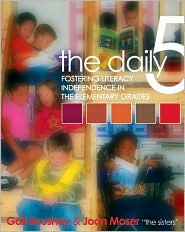Growing up, school was always the same for me. Year to year, it was always the same old routine until my mom remarried and we moved schools. Suddenly, I was thrown into a school system that was completely foreign to me. The student population was divided into four teams and every term, there was a big event when competed in some sort of challenge in the name of our team colour (I think I was Gold but I can't be sure). It was hyped up and when the day finally arrived, it was incredible fun. If you've ever muttered the word Gryffindor, you'll have some sort of idea of what I'm talking about.
I'm in my second year of teaching now and can remember my excitement as I was offered a job at a school that followed a similar practice. Four houses competing to be the best each week. Good behaviour, successes, helpfulness, improvement, the ways in which a student can earn 'house points' are vast and unlimited; they are never taken away. What's more is that staff are allocated to houses as well. I'm in the best house. ;)
One of the things I love about this system is that it encourages healthy competition. Without competition, we become comfortable and unmotivated. Progress will never occur if we are not driven to improve ourselves and the world around us. As I see it, pushing ourselves to be better than before should be our primary purpose in life (Note: I didn't say '
being better that everyone else'). Competition gives endless opportunities for our students to do the right thing. It allows students to work together toward a common goal. Teamwork, oh, how I love thee.
Another advantage to a house point system is that it creates an environment where students can rehearse and demonstrate good sportsmanship. Winning with grace and losing with dignity are such important skills. Playing fairly and striving to improve are healthy, natural, and unavoidable values for professional success and in games and sport, students can develop them. Teachers are constantly modelling these skills and beliefs. Usually.
The ugly side of competition is that we often forget the goal. We invent games like hockey, baseball, football, rugby, tennis, etcetera, etcetera ... truly for one purpose: entertainment. For fun. But somehow that focus gets lost and forgotten in pursuit of a trophy, medal, title, or fame. Competition turns vicious, points become the purpose and the fun is lost.
We find ourselves keeping score in terms of points instead of smiles. Instead of lifting ourselves up, we push each other down. Instead of the journey, the final result is what we fixate on. Instead of celebrating a competitor's triumph, we wallow in our own defeat. Case in point: money. The all-powerful way of keeping score on a global scale, we have lost our goal of progress in pursuit of monetary points.
While some will say that it's inappropriate to have this sort of system in a school, I whole-heartedly disagree. The ugly side of competition is a natural byproduct. If it's not worked out during childhood and adolescence, students will be unprepared to handle coming second place. They may not even be prepared to handle winning first!
So, what to do? As role models, we have a responsibility to model how to enjoy winning without being obnoxious. We must show children how to accept defeat without turning sour. We need to show students that winning isn't everything and losing isn't the end of the world. I love to win as much as the next person and I will smile a lot wider if my team wins but a "
wait till next time" attitude will trump a "
you cheated" protest anyday.
 But here's my hesitation: I like to weigh big decisions like this out before I commit. It's not that I'm afraid of failure...I just don't like cleaning up all that mess.
But here's my hesitation: I like to weigh big decisions like this out before I commit. It's not that I'm afraid of failure...I just don't like cleaning up all that mess. 







